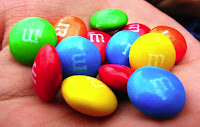Tuesday, June 21, 2011
Are artificial food dyes harmless fun? Or do they make kids bounce off the walls? I explored the science behind these contradictory claims for the Los Angeles Times after an FDA advisory panel decided against warning labels for artificially colored foods. Many studies find behavioral effects of food dyes in kids, but they are too small and too variable to act upon.
One thing is for sure -- no harm in avoiding them. As nutrition researcher Laura Stevens says, “One thing about the food dyes, I don’t know of any nutritious foods that they’re in.”
Photo credit: Mouzzy via Flickr Creative Commons
Wednesday, June 15, 2011
Biologic understanding of the hair follicle, the mini-organ that produces the shafts of keratin we call hair, has advanced by leaps and bounds in the last ten years. Now a handful of biotechnology companies are trying to translate this new knowledge into viable treatments for male pattern baldness and other types of hair loss.
I wrote about the new approaches for Nature Biotechnology (access limited to subscribers), which use cell-based therapies and topical drug cocktails designed to stimulate epidermal stem cells to create new follicles. Hair loss afflicts men, women, and children as a result of aging, disease, and medical treatments. The men's market is so huge, one researcher told me, “It’s mind-boggling.”
I wrote about the new approaches for Nature Biotechnology (access limited to subscribers), which use cell-based therapies and topical drug cocktails designed to stimulate epidermal stem cells to create new follicles. Hair loss afflicts men, women, and children as a result of aging, disease, and medical treatments. The men's market is so huge, one researcher told me, “It’s mind-boggling.”
Monday, June 13, 2011
Screening for cancer makes so much sense. Find the cancer early -- before symptoms show and tumors have grown and cancer has spread -- and have better chance of survival. However, in practice this is not always so. I wrote about an 18-year study in nearly 80,000 women found no benefit of screening for ovarian cancer for the Los Angeles Times. The lack of benefit couldn't have been more clear: no reductions in deaths, no finding cancers at earlier stages.
Subscribe to:
Posts (Atom)
